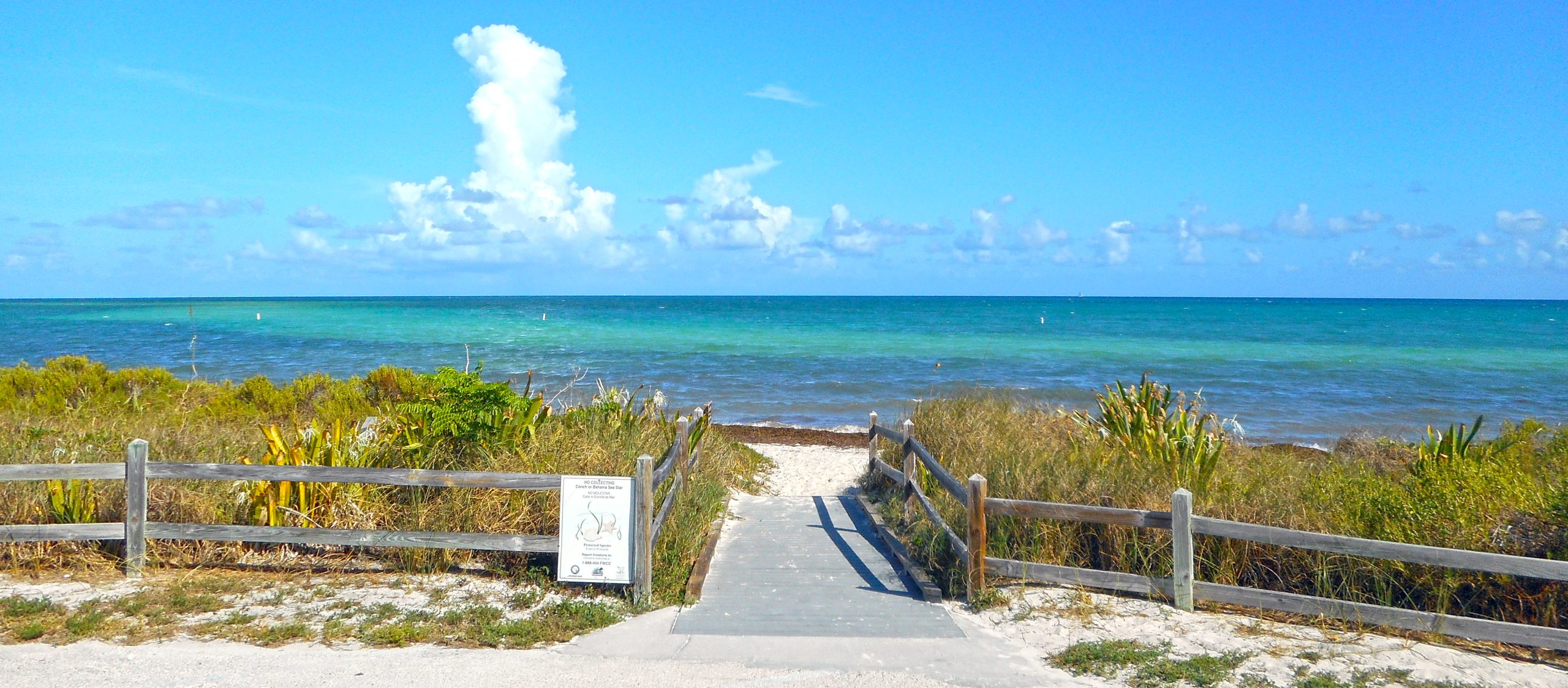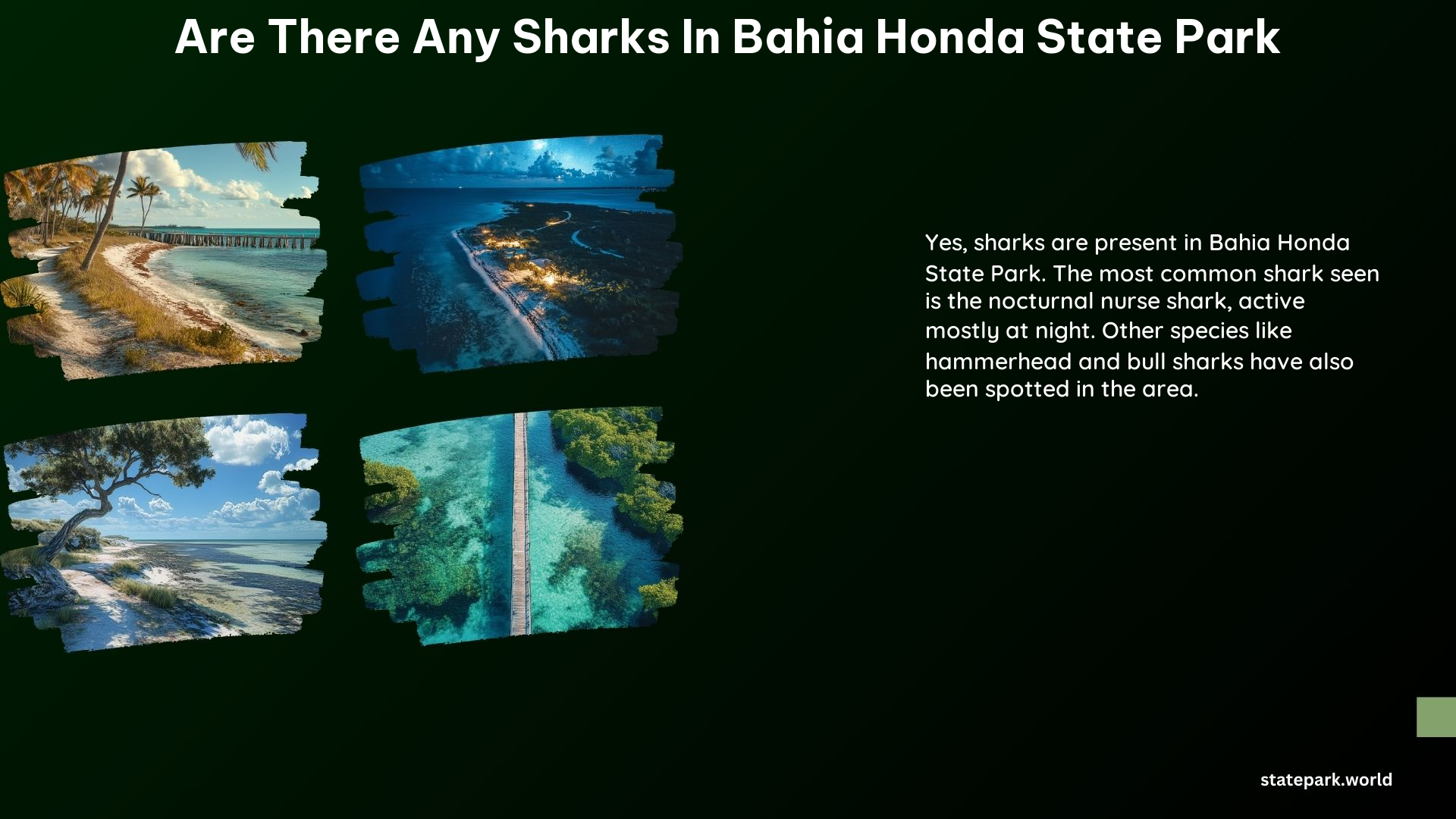Yes, there are sharks in Bahia Honda State Park. The most commonly seen shark in the area is the nurse shark, which is nocturnal and active mostly at night. Additionally, other species like hammerhead sharks and bull sharks have been spotted in the waters around the park.
Nurse Sharks in Bahia Honda State Park

Nurse sharks are the most frequently encountered shark species in Bahia Honda State Park. These sharks are known for their docile nature and are often found resting on the seafloor during the day. They are typically active at night, hunting for small fish, crustaceans, and mollusks.
Nurse sharks can grow up to 14 feet in length and weigh up to 330 pounds. They have a distinctive appearance, with a broad, flat head and a rounded snout. Their skin is rough and covered in small, tooth-like scales, which give them a sandpaper-like texture.
While nurse sharks are generally not aggressive towards humans, they can become defensive if they feel threatened. It’s important for visitors to Bahia Honda State Park to keep a safe distance from these sharks and avoid disturbing them.
Hammerhead Sharks in Bahia Honda State Park

In addition to nurse sharks, hammerhead sharks have also been spotted in the waters around Bahia Honda State Park. Hammerhead sharks are known for their distinctive, hammer-shaped heads, which give them a unique appearance.
These sharks are typically found in tropical and subtropical waters, and they are known to be more active during the day than at night. Hammerhead sharks feed on a variety of prey, including small fish, crustaceans, and even other sharks.
While hammerhead sharks are generally not considered to be a threat to humans, they can be aggressive if they feel threatened or if they are protecting their young. Visitors to Bahia Honda State Park should exercise caution and keep a safe distance from these sharks.
Bull Sharks in Bahia Honda State Park
Another species of shark that has been spotted in the waters around Bahia Honda State Park is the bull shark. Bull sharks are known for their aggressive behavior and their ability to thrive in both saltwater and freshwater environments.
Bull sharks are typically found in coastal waters, and they are known to be one of the most dangerous shark species to humans. They are known to attack humans, and they have been responsible for a number of fatal attacks in various parts of the world.
While bull sharks have been spotted in the waters around Bahia Honda State Park, they are not as commonly seen as nurse sharks or hammerhead sharks. However, visitors to the park should still exercise caution and avoid swimming or wading in areas where bull sharks may be present.
Shark Sightings and Safety Precautions
Shark sightings are relatively common in the waters around Bahia Honda State Park, particularly during the warmer months of the year. Visitors to the park should be aware of the presence of these sharks and take appropriate safety precautions.
Some tips for staying safe in the water at Bahia Honda State Park include:
- Avoid swimming or wading in areas where sharks have been spotted.
- Avoid swimming at dawn, dusk, or at night, when sharks are more active.
- Avoid wearing shiny jewelry or bright-colored clothing, which can attract sharks.
- Avoid swimming or wading in areas where there is a lot of baitfish or other prey that may attract sharks.
- If you see a shark, remain calm and slowly back away from the water.
By following these safety precautions and being aware of the presence of sharks in the area, visitors to Bahia Honda State Park can enjoy the beautiful beaches and waters while minimizing the risk of encountering these predators.
Conclusion
Bahia Honda State Park is home to a variety of shark species, including nurse sharks, hammerhead sharks, and bull sharks. While these sharks are generally not aggressive towards humans, it’s important for visitors to the park to be aware of their presence and take appropriate safety precautions.
By understanding the types of sharks that can be found in the waters around Bahia Honda State Park and following safety guidelines, visitors can enjoy the park’s natural beauty while minimizing the risk of encountering these predators.
